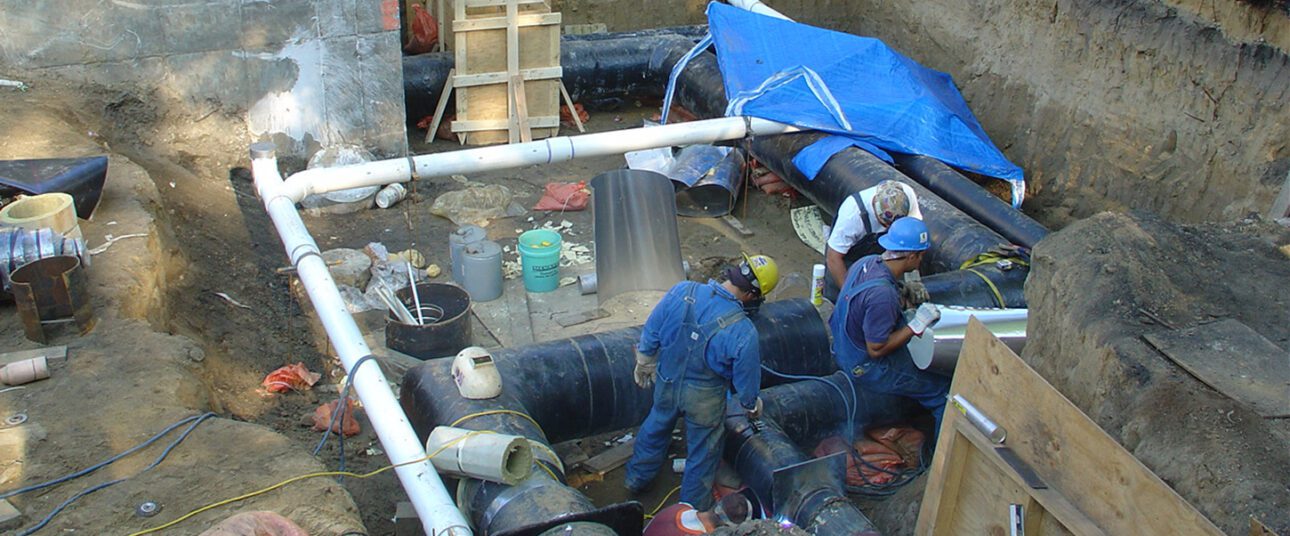Northwestern University
GBA has designed more than $5 million in steam distribution improvements for the Evanston, IL, campus, boosting reliability and efficiency.
The Response
The initial phase of the $4 million South Campus project included an analysis of all steam loads (present and future) to properly size lines for normal and emergency duty.
- 2,600 feet of replacement steam and condensate piping was installed.
- 700 feet of hot water piping was installed.
- The piping system consisted of carrier pipe, 2 inches of insulation, air space, 10-gauge steel inner conduit, high-temperature insulation, and a polyethylene outer jacket.
- Condensate return piping and components are all stainless steel for longer life.
- 350 feet of temporary piping was installed to maintain service to critical buildings during construction.
- The project included boring new 12-inch steam and 5-inch condensate piping under busy Sheridan Road. Approximately 100 feet had to be bored to avoid closure of this major thoroughfare.
The $1 million North Campus steam infrastructure project had two main objectives: provide new steam distribution to existing residence halls, and provide the necessary capacity and infrastructure for future buildings. The project required extensive coordination with the owner and contractors for both components.
- Careful coordination with the contractor for this project, as well as the contractor on a nearby new construction project, occurred throughout to ensure that Northwestern University was getting the steam distribution required for both buildings.
- 500 feet of replacement steam and condensate piping was installed.
- A new steam pressure reducing station was installed to take the higher pressure (230 psig) steam distributed across the campus and convert it into usable steam for the residence halls (40 psig).
- The piping system consisted of carrier pipe, 2 inches of insulation, air space, 18-gauge steel inner conduit, high-temperature insulation, and a polyethylene outer jacket.
- Condensate return piping and components are all stainless steel for longer life.
Feeds were cross-connected to improve distribution reliability
60-year-old steam and condensate piping replaced
Stainless steel components were chosen for longer life
Temporary piping maintained service to critical buildings during construction

